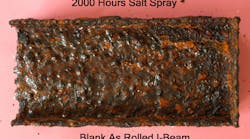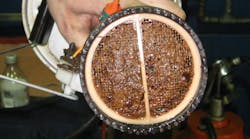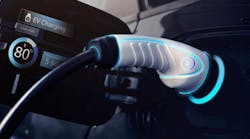Fleet maintenance professionals are using an aftermarket solution, Nox-Rust X-121B, to not only stop active corrosion, but to add an extra layer of defense protection. The coating provides fleets of all types with an easy-to-apply, aftermarket corrosion-inhibiting tool that can be sprayed directly on trouble spots, before and after rust is present.
The vast majority of truck and trailer OEMs are using Nox-Rust 1210HP hot-melt corrosion preventative in and on structural components as the first line of defense against the effects of moisture, road debris and chemicals. Applied using a heated dip coating tank, the coating hardens upon cooling to form a dry, wax-like film.
Nox-Rust 1210HP also can be used for other applications where enhanced corrosion protection is desired. Additionally, it can be applied to a wide variety of substrates and requires far less surface preparation than competing anticorrosive coating technologies.
Both products are produced by Daubert Chemical Company (www.daubertchemical.com), a recognized leader in the formulation of cavity wax and wax-based underbody coatings.
NO AFFINITY FOR WATER
Nox-Rust 1210HP and Nox-Rust X-121B are hydrophobic and literally exclude water molecules from contact with the metal they cover, notes Mike Duncan, Ph.D., vice president technology for Daubert Chemical. Their ability to protect metal from salt, humidity, dirt and debris makes them one of the most effective direct-to-metal protective coatings around.
Nox-Rust 1210HP also exhibits superior adhesion to welds and demonstrates resilience even when exposed to post-coating assembly processes using welds or mechanical fasteners like screws and bolts, he says.
“By using products like Nox-Rust 1210HP to protect components, engineers have greater flexibility when choosing materials and construction methods,” explains Duncan. “Thinner, higher-alloy steel can last much longer and welded areas are far better protected.
“By leveraging the superior coverage that submersion in a wax-based coating like Nox-Rust 1210HP affords, I-beam, C-channel and tubular steel structural components can all receive the same optimum level of anticorrosion protection.”
In final assembly scenarios, where coating abrasion is often inevitable, the pliable coating exhibits self-healing characteristics that maintain a residual anticorrosive barrier, he adds. Nox-Rust coatings also come in the form of a touchup solution that can be applied to areas where a component’s coating has been compromised in the assembly process.
Duncan says some other key advantages over similar solvent-containing rust preventives are no loss of material during application – a nearly 100 percent utilization and improved overall corrosion protection due to coating uniformity and process control.
PM PROTOCOL
Many fleets use Nox-Rust X-121B as part of an effective preventive maintenance (PM) protocol that stops active corrosion and protects vehicles on- and off-road.
“As part of a regular PM, fleets can inspect a vehicle for telltale signs of corrosion and can apply Nox-Rust X-121B directly on trouble spots with active rust,” Daubert Chemical’s Duncan says. “The product dramatically inhibits the oxidation process and prevents further damage from occurring.”
Nox-Rust X-121B also can be widely applied to areas of a vehicle where nicks and abrasion have compromised original protective coatings.
Nox-Rust X-121B is a thixotropic wax-gel rust proofing compound designed to provide a long-term protective film for primed and unprimed steel, he says. The coating flows when applied and dries to a firm wax-like film that will repel water, self-heal and remain flexible at low temperatures.
The product can be applied to some previously coated substrates and interacts well with galvanized, E-coated, powdercoated and liquid-coated steel. Unlike other traditional corrosion-resistant coatings, surfaces treated with Nox-RustX-121B require no preparation before accepting new welds.
Furthermore, the product “is particularly effective at protecting a vehicle’s undercarriage, which is one of the most challenging environments for any corrosion prevention plan of attack,” says Duncan. Because it is compatible with both finished and unfinished metal, little, if any, preparation is required before application.
Nox-Rust X-121B also can be used to treat areas where repair work has created exposed metal and over new welds. Additionally, the product inhibits the galvanic response caused when stainless steel nuts and bolts make contact with carbon steel components.





